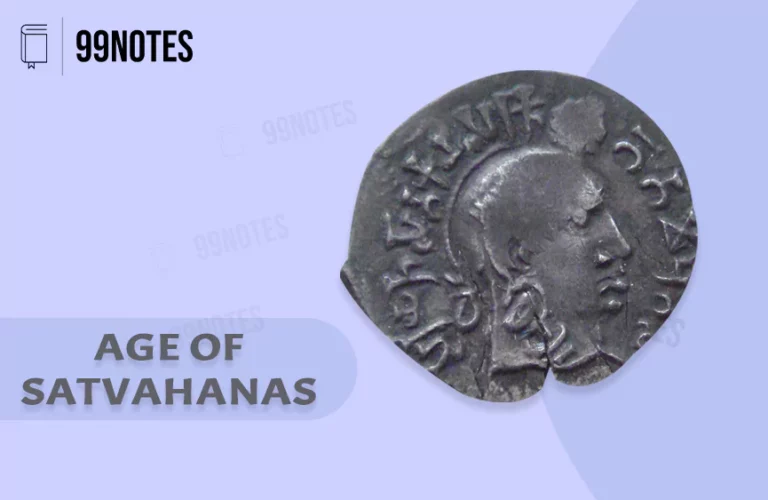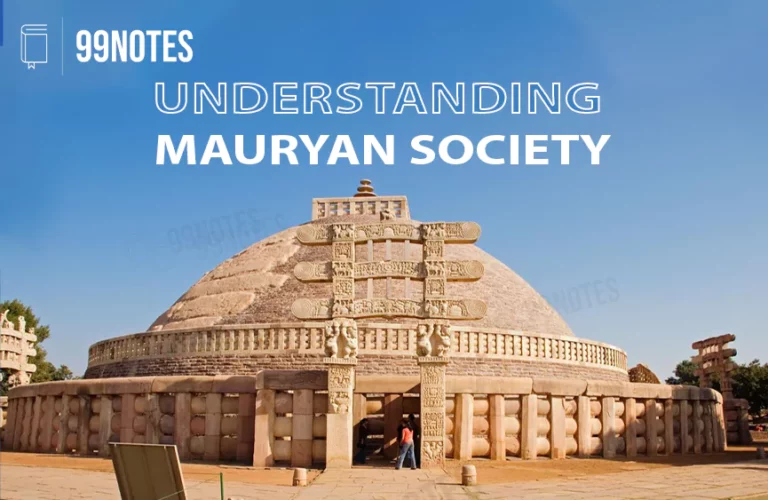Complete Vedic Period UPSC Notes [1500 BCE-500 BCE]
Vedic Period [1500 BCE-500 BCE]
The Vedic Period started with the advent of the Aryans in around 1500 BCE, which coincided with the Late Harappan period (associated with the decline of the Indus valley civilization). Aryans spoke Sanskrit, which is considered the origin of most of the current languages of the Indian subcontinent and is said to be a part of Indo-European languages, which is the origin point of most European languages and Persian.
Early scholars such as Wheeler believed that the Aryan tribes originally came from the steppes and invaded India around 1500 BCE. This was known as the Aryan Invasion theory. However, we have discussed in the previous article why an Aryan Invasion is an unlikely theory. Therefore, it has been rejected in favour of a much more plausible Aryan Migration theory.
Basic of Aryan Migration Theory
Linguistic arguments
-
- European scholars discovered linguistic similarities between Sanskrit and the major European languages during the colonial era led to the introduction of the Aryan migration theory.
-
- The Dravidian language family of south India is distinct from the Indo-European language spoken by ‘Aryans’.
-
- Introduction of Horse: People of Steppe-pastoralist ancestry may have introduced horses in India as we don’t find any significant proof of horses in Indus valley civilisation.
-
- The initial written evidence for an Indo-Aryan language is found in northern Syria, the location of the Mitanni kingdom. The Mitanni kings adopted Old Indic throne names, and Old Indic technical terms were used for horse-riding and chariot-driving. The Old Indic term r’ta, meaning “the cosmic order”, is central to Rigveda and was also used in the Mitanni kingdom. Old Vedic gods, including Indra, were also known in the Mitanni kingdom, whereas it finds no place in Harappan art.
Arguments from the Study of Vedas
-
- Rigveda mentions non-Vedic tribes with people of a different colour (Dasyus).
-
- The term ‘Varna’, apart from being a reference to occupational categorisation, is also synonymous with colour.
-
- The early Vedic text mentions the Indus river system numerous times, whereas it mentions River Ganga only once.
-
- Boghaz-Koi tablets, a collection of more than 20,000 inscriptions, refer to cultural practices like the Vedic culture in central Asia. It mentions Indra, Varuna and Mitra. These tablets belong to the 2nd Millennia BCE.
Arguments from Genetics
-
- In a collaborative effort between the Harvard Medical School and the Centre for Cellular and Molecular Biology (CCMB), David Reich conducted a study. Through this, they were able to recognise two genetic groups in the majority of the Indian population, which they called “Ancestral North Indians” (ANI) and “Ancestral South Indians” (ASI), respectively.
-
- They found that the ANI genes are close to those of Middle Easterners, Central Asians and Europeans. In contrast, the ASI genes are not similar to all other known populations outside India, though the indigenous Andamanese people were determined to be the most closely related to the ASI population of any living group (although distinct from the ASI).
Chronology of the Aryan Migration
1. Migration of Aryans
Most scholars believe Aryans came from somewhere in the steppes, stretching from southern Russia to central Asia. On their journey toward India, Aryans first appeared in Iran, where Indo-Iranians lived for a long time.
2. Early Vedic Period (1500 BCE-1000 BCE)
In about 1500BCE, the Rig Vedic people appeared in the Indian subcontinent and lived in the land of “Sapta Sindhu” (seven rivers). Scholars associate this region with the Punjab plains. This period is known as the early Vedic period.
| Ancient name | Modern rivers associated with |
| Sindhu | Indus – the most mentioned river |
| Vipash | Beas |
| Vitatsa | Jhelum |
| Parushini | Ravi |
| Askini | Chenab |
| Shutudri | Satluj |
| Saraswati | Possibly Ghaggar-Hakra channel |
-
- River Yamuna has been mentioned three times while River Ganga only once in the Rig Veda. In comparison, the seven rivers are mentioned several times.
![Complete Vedic Period Upsc Notes [1500 Bce-500 Bce] | Updated July 27, 2024 Early Vedic Period (1500 Bce-1000 Bce)](https://99notes.in/wp-content/uploads/2022/10/image1-1-2.jpg)
3. Later Vedic Period (1100BCE – 600BCE):
-
- The period after about 1000-1100BCE is generally referred to as the Later Vedic period. It is the widespread use of Iron that distinguishes the early Vedic phase from the later Vedic.
-
- Iron allowed large-scale clearing of the forests in the Ganga planes. As a result, Vedic culture gradually moved towards Gangetic Valley, known as Aryavarta.
-
- This phase is also known as Painted Grey ware (PGW) culture as its inhabitants used earthen bowls and dishes made of painted grey pottery.
Vedic Literature
We learn about the Aryans in India from Rigveda, the earliest literature in Sanskrit. The Vedic literature has been predominantly classified into two types.
1. Shruti Literature
– The word ‘Shruti’ means ‘to hear’. It describes the sacred texts, including Vedas, Brahmanas, Aranyakas, & Upanishads. Shruti Literature is canonical, consisting of revelation and unquestionable truth, and is considered eternal and divine.
2. Smriti Literature
Whereas the word ‘Smiriti’ literally means to be remembered and may change over time. Smriti Literature consists of the entire post-Vedic Classical Sanskrit literature and other texts such as Vedanga, Shad Darshana, Puranas, Itihasa, Upveda, Tantras, Agamas and Upangas.
The Vedas
The word Veda comes from ‘vid’, which means ‘to know. Vedas signify superior knowledge.
The Samhitas: The Mantra portion of the Vedas is known as Samhita. Being the central element of the Vedic texts, these are often referred to as the Vedas. These are four in numbers:
1. Rig Veda(1500-1000BC)
It is the oldest surviving literature in Sanskrit. It is a collection of hymns offered to Indra, Agni, Mitra and other gods by various families of sages. It consists of ten mandalas or books with 50 Anuvakyas(sub-sections) containing hymns or Suktas(well-said) in praise of god.
Books II to VII form its earliest portion of these, and Books I and X seem to have been the latest additions. The Rigveda has many things in common with the Avesta(Religious text of Zoroastrians).
2. Yajurveda (1200-800BCE)
It Primarily contains the details of rules to be observed at the time of sacrifice.
3. Sama Veda (1200-1000BCE)
It consists of hymns, ragas and raginis (musical notes). It has also been called the “book of chants” due to its lyrical nature. It is considered the genesis of Indian classical music.
4. Atharv Veda (Before 900 BC)
It deals with healing various ailments and black magic. It also incorporated knowledge of indigenous people.
Each of the Veda was recited by a particular Vedic priest or a Ritvik:
| Vedic Priest | Functions |
| Hota: | One who invokes the hymns of Rig Veda |
| Adhvaryu: | One who performs the rituals of Yajurveda. |
| Udgata: | One who sings intonations & rhythms given in Samaveda. |
| Brahma: | One who presides over the rituals of all Vedas. |
Brahmanas
Each Veda is accompanied by a text known as Brahmana, which is essentially a collection of texts with commentaries on the specific Veda. For example, Rigveda is accompanied by Aitreya and Kaushitaki Brahmana.
- They deal with the vast bulk of sacrificial paraphernalia, which represents Karma-Kanda; these texts have little philosophy in them.
Aranyakas
‘Aranya’ means forest. Aranyakas are concluding portions of the several Brahmanas. The Aranyaka texts are so called because ‘they were works to be read in the forest’ in contra-distinction to the regular Brahmanas, which were to be read in the village.
- It is relatively small compared to the Brahmanas.
- They form a bridge between Karma marga(Ritualism), the sole concern of the Brahmanas and the Gyan marga(Path of Knowledge), which the Upanishads advocated.
- They mark a transition from ritualistic to philosophical thought.
Upanishads
These are philosophical texts. The word Upa-ni-sad means sitting down(sad) of the disciple near his teacher(ni) in a devoted manner (upa) to receive instruction about the highest reality.
- Muktikopanishad gives the number of Upanishads as 108. However, 10-11 Upanisads on which Shankaracharya has commented are considered authentic. These are Isha, Kena , Katha, Prasna, Mundaka, Mandukya, Tarittiriya, Aitareya, Chhandogya, Brahdaranyaka.
- They developed the monistic ideas scattered in Samhita/Vedas, which were eventually compiled in the form of the Vedanta school(meaning the end of Vedas).
Various aspects of Early Vedic Society
Religion/ Tribal Gods
The religious beliefs of the Vedic people are reflected in the hymns of Rigveda.
- Nature worship: They venerated the natural forces around them (like wind, water, rain, thunder, fire etc.
- The dominance of masculine gods: Very few female deities were venerated, indicating a patriarchal set-up in society.
- Polytheism: There were other gods:
| Gods | Description |
| Indra, also known as Purandhara (the breaker of forts) | The god of thunder/Rainmaker. He was perhaps the most important god invoked to destroy the enemies. |
| Agni (God of Fire) | He was considered the intermediary between Heaven and the Earth |
| Yama | God of death |
| Other Deities | Varuna, Vayu, Rudra, Soma etc. |
-
- Sacrifices: Sacrifices were an important aspect of Vedic culture. Sacrifices or yajnas were performed to invoke the gods in order to grant boons and victory in battles. Various types of Yajnas were:
-
-
- Rajasuya: conducted during coronation & commemoration.
- Vajapeya: to gain strength for the king.
- Ashwamedha: to show the strength of the king.
Family structure during Vedic Age
- In the Aryan society, kinship was the basis of the social structure. A person was identified by his clan and was loyal to their tribe or Jana.
- KULA or family formed the basic unit, which then joined together to form Grama or village.
- Large families were the norm in society. GRAHAPATI, or KULAPA, was the head of the family.
- GRAMINI was the head of the village. Initially, he was only head of a fighting unit (for Sangram); he later became head of the village. With time, he became identical to VRAJAPATI. In Later Vedic times, Vrajpati enjoyed authority over a large land or pasture.
- VISHU constituted a group of villages which Vishupati headed.
![Complete Vedic Period Upsc Notes [1500 Bce-500 Bce] | Updated July 27, 2024 Society Structure Of Vedic Age](https://99notes.in/wp-content/uploads/2022/10/image3-6-1024x902.jpg)
Polity of Vedic Age
- JANA or tribe was the highest political unit. There were several tribal kingdoms, such as Bharatas, Matyas, Yadus and Purus.
-
- RAJAN: the king often enjoyed hereditary succession but was sometimes appointed by the people.
-
- PUROHITA: He was the priest and wielded a substantial amount of power and influence in Vedic society.
-
- SENANI: Commander of the army.
-
- According to tradition, Aryans were divided into five tribes (Pancha-Jana or Panchajanya). It appears that Bharata and Tritsu were the ruling clans.
- Cows were the most important form of wealth, and the linguistic term for war was GAVISHTHI (search for cows). War is also referred to as a Sangrama, which could have meant war between villages.
![Complete Vedic Period Upsc Notes [1500 Bce-500 Bce] | Updated July 27, 2024 Political Structure Of Vedic Age](https://99notes.in/wp-content/uploads/2022/10/image2-5-1024x823.jpg)
- Clan-based assemblies existed, such as SABHA (general assembly) and SAMITIS (council of elders). Samiti was responsible for the election of Rajan/king. Other assemblies were VIDHATA (oldest) and GANA. These assemblies were attended by women as well.
- The Rigveda does not mention any officer for administering justice.
Tribal Conflicts during Vedic age
The growing need for more pasture lands and cattle to protect people and their settlement all probably led to an increase in inter and intra-tribal conflicts and warfare.
- They fought two types of battles, one with pre-Aryans (Dasa and Dasyus) and two amongst themselves.
- For example, the Battle of Ten Kings fought on the river Parushni (Ravi) is an important event mentioned in Rigveda. It was fought between the Bharata clan and a host of Ten Kings under the leadership of Purus. The Bharata clan emerged victorious under the leadership of king Sudasa.
Vedic Society
The Early Vedic Society was a tribal society in which predominant social relations were based on kinship ties.
- Absence of caste: The society was not divided according to caste lines, and even the Rajas (kings), the Purohitas (priests), the artisans etc. were parts of the clan networks. However, we trace the origin of the varna system in the Purusha Sukta found in the Xth Mandala of the Rig Veda. Purusha is the primordial being, constituted by the combination of the four Varnas. Brahmins constitute its mouth, Kshatriyas its arms, Vaishyas its thighs, and Shudras its feet.
- Patriarchal nature: The society was patriarchal, and the birth of a son was the common desire of the people.
-
- The basic social unit was Kula or the family, and the Kulapa, i.e. “one who protects the family”, means the eldest male member or the head of the family.
-
- Position of women: Even though society was patriarchal, women had an important position. They were educated, and they had access to the assemblies. There are also instances of women who composed hymns (Lopamudra, Ghosha etc.). They had a right to choose their partners and could marry late. Child marriage was not practised; however, polygamy was prevalent.
- Occupations: Various occupational groups such as weavers, smiths, carpenters, leather workers, chariot makers, priests etc. are also mentioned. The chariot makers occupied a special social status.
- Dasas (probably an early branch of Aryans) or Dasyus (probably the original inhabitants) were those who did not perform sacrifices. Later they came to be known as slaves and were often captured in war-treated as property of their owners.
Economy during Vedic Period
- Pastoral Economy: The Early Vedic society was pastoral, and cattle rearing was the dominant occupational activity.
-
- Cattle wealth: Cattle was the chief measure of wealth, and a wealthy man who owned many cattle was called ‘Gomat’. Similarly, many linguistic expressions in Rigveda are associated with cows, such as Gavisthi (war or search for cows), Gotra (the ancestral house where cows are kept) etc., showing the importance of cows in the Vedic culture.
-
- Agriculture: Vedic tribes did not practice agriculture on a large scale due to low rainfall and frequent change in the course of rivers and depended on shifting cultivation and used wooden ploughs. They were aware of different seasons.
-
- Crops: They cultivated Wheat, Barley, Millet, Pulses and Cotton. Cultivation of Rice was rare.
-
- Crafts: Carpenter, chariot maker, weaver, leather workers, potters etc. are mentioned in the Vedic texts.
- Metallurgy was known, and the term ‘Ayas‘ (metal) was used to refer to Copper or Bronze. In the later Vedic age, ‘Syam Ayas‘ (black metal) was referred to as Iron.
- Taxation: There was no regular taxation, and a voluntary offering (Bali) and war bounties were sources of income.
Conclusion
The Vedic period is the key era in Indian history. It laid the foundation for India’s society, religion, and ideas found in the Vedas. Understanding this time helps us see how modern India began.
The arrival of the Vedic culture marks the actual starting point of India’s Ancient written history. It also marks a significant shift in the social and cultural aspects of Indian society. Further, by 1000 BCE, an important socio-political change also started with the formation of tribal republics or Janapadas, which we shall see in the following article.
FAQ’s Related to Vedic Period
Q1. What do you mean by Vedic Age?
The Vedic age refers to the period in ancient Indian History When the Vedas, the oldest scriptures of Hinduism, were composed. This era is known by the transition from nomadic lifestyles to settled agriculture, and the development of social, religious, and political institutions.
Q2. What is the Vedic Age?
The Vedic age is a significant era in Indian History spanning from around 1500 BCE to 500 BCE. It marks the time when the Indo-Aryans settled into the north-western region of Indian Subcontinent and began composing the Vedas, laying the foundations of Hindu Society.
Q3. Who were the Aryans in UPSC?
In the context of UPSC studies, the Aryans are understood as Indo-European tribes who migrated into the Indian subcontinent around 1500 BCE. They are credited with composing the Vedic texts, which formed the basis of the later Hindu culture and society structure.
Q4. Why is Vedic literature Important?
Vedic literature is crucial because it provides insights into the early socio-religious and cultural practices of India, helping to understand the historical context of Ancient Indian Civilization. These texts are also significant for understanding the evolution of Indian Philosophy, politics, culture and society.
Explore additional significant articles on Ancient Indian History listed in the table below:
| Harappan Civilisation | Various Aspects of Harappan Civilisation |
| Stone Age | Decline of Harappan Culture |
| The Mahajanapadas | Later Vedic Phase |
| Mauryan Empire | Gupta Empire |

![Complete Vedic Period Upsc Notes [1500 Bce-500 Bce] | Updated July 27, 2024 Everything You Need To Know About Vedic Period](https://99notes.in/wp-content/uploads/2023/04/vedic-culture-99notes-upsc-1.webp)
![Complete Vedic Period Upsc Notes [1500 Bce-500 Bce] | Updated July 27, 2024 Everything You Need To Know About Vedic Period](https://99notes.in/wp-content/uploads/2022/10/image-33-6638a7526e535-1024x240.webp)





